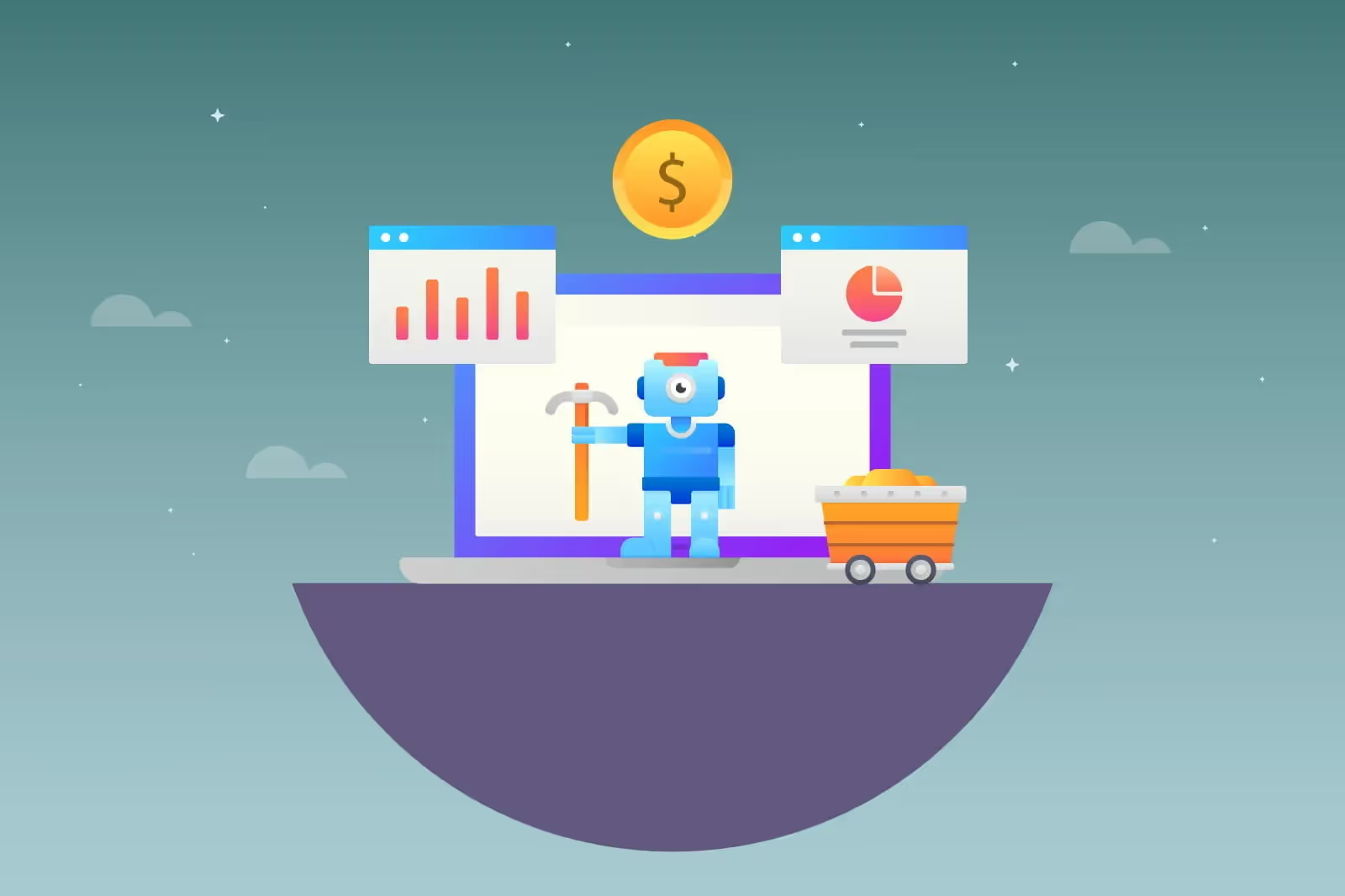

Software as a Service (SaaS) is a rapidly expanding market; many businesses are using the SaaS business model to offer their services through web-based applications to customers worldwide. SaaS transformed how companies satisfy consumer needs.
Thanks to the SaaS business model, we are now more efficient in everything we do. Whether its a project management, user onboarding, or accounting, there is a SaaS solution for every single business line in your organization, increasing your efficiency.
One of the most mysterious topics around the SaaS world is the valuation of a SaaS business and when it is time to sell? SaaS business model is a unique one, and it is not similar to your classic business model; therefore SaaS company valuation is different from more traditional businesses. In this article, I will try to shed light on the mysterious startup valuation by providing everything you need to know, including which metrics you should be focusing the most to create a value.
How to Value a SaaS Business?
Before delving into the valuation methods, you need to know and understand the differences between SDE, EBITDA, and Revenue. These will be the main pillars of your valuation.
What Is SDE?
What the heck is SDE right? It sounds like some kind of disease right? I am sure that it sounded like a disease to you if you did not have a background in investment banking.

Revenue: Income generated by your business operations
COGS: Cost of goods sold refers to the refers to the direct costs of producing the goods sold by a company
OPEX: Operating expenditures are the expenses that are tied to the main operations of the business. Such as salaries, rents, and utilities
Owner Compensation: Wages paid to a owner for his contribution
Most businesses valued under $5,000,000, with relatively slow growth rates and no management team, are valued by the seller discretionary earnings (aka SDE). This metric is the most accurate way of reflecting the underlying earnings power of a small business.
Many SME's are owner reliant; therefore, it is normal for these businesses to have owner associated wages and expenses. What the owner pays to himself as a reward for his contributions may not be on par with the market rates, or there could be a couple of personal expenses recorded under business expenses for tax efficiency. These items become addbacks when calculating the SDE to reflect the true potential of the earnings power.
What is EBITDA?
Okay well now you SDE and you are probably saying oh what the heck is EBITDA?? As someone who works in a SaaS startup I am very used to seeing the confused faces when I talk about valuation metrics such as EBITDA. I am going to breakdown the EBITDA for you so that you don't think that investors are performing some kind of woodoo magic when they say EBITDA!!

Earnings before interest, taxes, depreciation, and amortization (EBITDA) is a widely used financial metric to measure the company's overall financial performance.

So apart from all that jargon, EBITDA indicates how profitable the business is. EBITDA itself is not going to be enough to measure the performance of the company. You need to calculate the EBITDA margin and compare it with your industry average to see where you stand.

For example, Company A has an EBITDA of $1,000,000 while its total revenue is $10,000,000. The EBITDA margin is 10%. Company B has an EBITDA of $1,100,000 and total revenue of $15,000,000.
This means that while Company B has a higher EBITDA, it actually has a smaller margin than Company A (7% against 10%). Therefore, from the investor's point of view company A will look more favorable.
The Transition from SDE to EBITDA
As the business starts to grow and transforms from an owner-operated small business to more to mid-sized business, valuation methods change as well. If the company's value exceeds $5,000,000 then it will be more accurately valued using the EBITDA. Larger companies have more complex capital and ownership structure. EBITDA will be better suited to reflect the financial profitability of the firm.
Most of the time, SDE and EBITDA valuation will be more than enough to pinpoint the company's value. However, there are times where your EBITDA margin could be equal to zero and isn't reflecting the future earning potential of your company.
This often happens in the world of startups. When your EBITDA is not reflecting your future earnings potential, it is best to use revenue in your valuation.
As a SaaS company, EBITDA could be useless for you because you are making a hefty amount of upfront investments, which are reflected in your EBITDA as you grow.Owing to the recurring revenue model in SaaS companies and assuming that your customers stick with the business, the profit in the future will rise dramatically as the business matures and spends considerably less on these items.
Calculating the revenue and using it as your valuation makes sense for a growing SaaS company. It is important to emphasize that the revenue-based valuation model is solely based on growth. If your SaaS business does not grow, then you can not use the revenue to forecast your future earnings potential
So you might be asking which method do I choose for valuing my SaaS business?
- Is the business owner operated small business?
- Are your revenues growing below %50 annually?
- Does your business generate less than $2,000,000?
If one of the above fits you, you should favor SDE as your preferred valuation method. Investors will evaluate your company and come up with a multiple for your SDE to arrive at a valuation for your business. If none of the above fits you, then you could opt for EBITDA or revenue valuation.
Now, you are probably asking how do investors find a multiple for business?
SaaS Valuation Multiples
Finding a SaaS multiple for valuation is more of an art than a science. There are many factors to consider before coming up with a multiple, but what matters the most is the sustainability, scalability, and transferability of your business.
For SaaS businesses, SDE multiples usually range between 3x-5x, and the multiple your company gets is dependent on a couple of factors. Still, I will mention a few of the important ones here.
- Age of the SaaS business: If your business has a track record of a couple of years with the sustainable earnings, then this will make your business easier to evaluate in terms of future earnings. If your business has been operational for 2 years, it will receive a higher valuation multiple than a younger startup. If your company is older than 3 years, you will receive a higher multiple from the investors. Don't get me wrong I am not saying that younger startups would not have any investor interest. There are some investors with higher risk tolerance, and those will be interested in the high risk younger startups.
- Owner Involvement: Most of the small businesses are owner-operated one-man show businesses. Businesses that can run without the founder will be more appealing to potential investors. If the business has a solid team that can run the company smoothly without the owner's involvement, this business will receive premium valuation multiples compared to a business that can not operate without the owner putting in countless hours every day.
- Market Trends: No one wants to sell a business growing rapidly in a trending industry. No one wants to buy a company in a declining market. The ideal ground is to be in a consistently trending market with sustainable business growth.
- Growth rate: Having a predictable and sustainable growth rate will make your company more appealing for the investors. Everyone prefers a company with stable and predictable growth rates instead of a company with unpredictable and distorted growth rates.
- Customer metrics: Customer metrics are one of the most critical metrics for SaaS valuation. Investors pay great attention to metrics such as Churn, CAC, and LTV to assess the quality of the customer base and the predictability of the revenue.
Which SaaS Metrics Matters Most?
When valuing a SaaS business, investors are evaluating some SaaS related metrics to find a moat. To discover the strengths and weaknesses of the companies, investors often look at the few important metrics.
- Churn: The churn for your business is simply the number of users who stop using your services and unsubscribe in a period of time, usually recorded in a percentage. Churn is one of the most important metrics investors look at because it can tell them whether your business will be able to sustain the growth or not. A high churn might indicate that maybe your services are not suitable for SaaS recurring revenue business model. Usually, it is best to have a churn rate below %10, and having a churn below %5 will put you in a sweet spot.
- CAC: Customer acquisition cost (CAC), indicates how much money is spent on marketing and sales to acquiring a single customer. Spending less on acquisition will make you more favorable for investors. CAC can vary from business to business. It is better to compare your CAC with LTV to have a clearer picture of the price of acquiring a new customer

- LTV: Customer lifetime value (LTV) calculates the average revenue generated from a customer throughout his time with your business. Higher LTV is always better, plus high CAC can be justifiable if your LTV is also high. You should try to have LTV higher than CAC. Ideally, your LTV should 3x higher than your CAC.

- MRR: SaaS businesses offer a subscription plan for the customers and MRR is the monthly recurring revenue generated in a single month
- ARR: Annual recurring revenue is the revenue generated from the subscription every year. If you do offer annual plans, make sure to aim for a 5:1 MRR to ARR ratio.

















.svg)
.svg)
.svg)
.svg)
.svg)

.svg)
.svg)












.svg)
.svg)




.png)

















